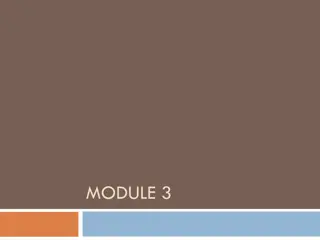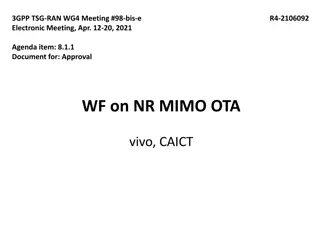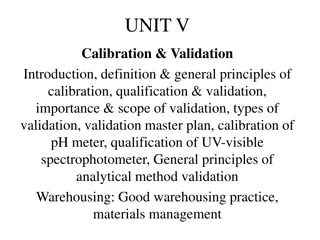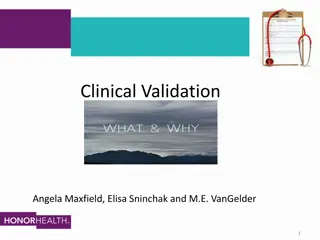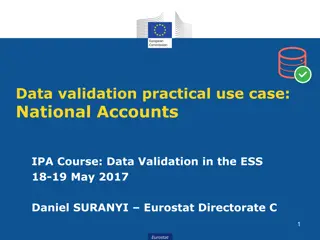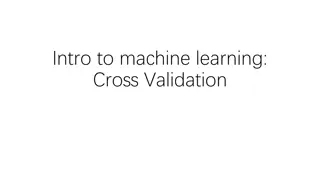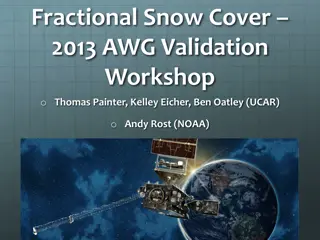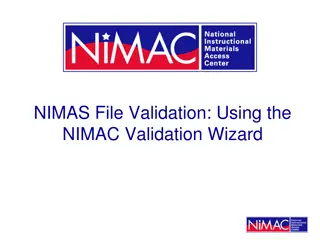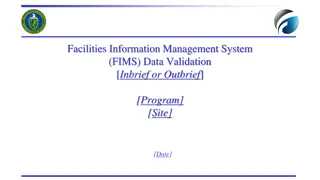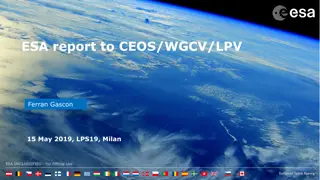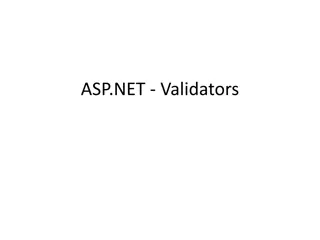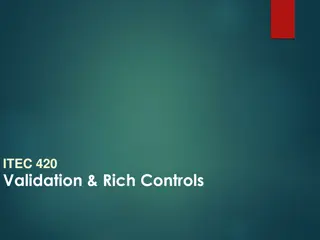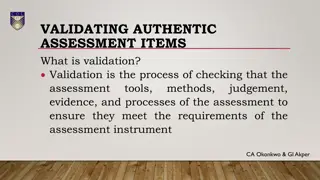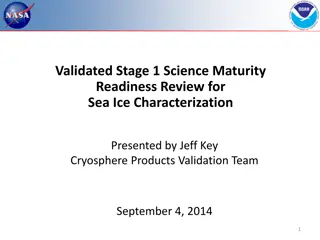Evolution of Serials Validation Processes at OhioLINK
The evolution of serials validation processes at OhioLINK over the years, from the establishment of high-density storage facilities to the development and refinement of validation policies. The transition from issue-level to volume-level validation, evaluation of efficiencies, and the impact on staff time and processes are discussed. The continuous efforts to streamline and improve the validation process are highlighted.
Download Presentation

Please find below an Image/Link to download the presentation.
The content on the website is provided AS IS for your information and personal use only. It may not be sold, licensed, or shared on other websites without obtaining consent from the author.If you encounter any issues during the download, it is possible that the publisher has removed the file from their server.
You are allowed to download the files provided on this website for personal or commercial use, subject to the condition that they are used lawfully. All files are the property of their respective owners.
The content on the website is provided AS IS for your information and personal use only. It may not be sold, licensed, or shared on other websites without obtaining consent from the author.
E N D
Presentation Transcript
Print Archive Network (PAN) Forum: OhioLINK Validation of Serials Amy Pawlowski Deputy Director, OhioLINK
Short History 1980 s: Committee formed to recommend solution to library storage issues too many libraries needed to expand Committee recommended the building of high-density remote storage for State universities and a way to share collection data (OhioLINK envisioned) 1988: 5 high density remote storage facilities built to house low use collections of 12 universities 1990 s: Late 2000 s: All 5 storage facilities nearing capacity 2010: Decision made to de-dup serial holdings among 5 facilities
Serials Validation Routines 2010 2016 2010/2011: Developed policies, procedures, and tested against a set of reference holdings. Initial policy for validating serials: validate at the issue level including verifying that all pages were intact. Done for all identified keeper volumes. Use this validation policy between 2010 and early 2016 to validate keeper volumes for: 130 JSTOR titles 129 Elsevier titles 15 Large Volume Serial Titles
Updated Serials Validation Policy & Procedures 2016 In Summer, 2016, the de-duplication process was evaluated to identify potential efficiencies. Findings: the validation process took a significant portion of the process (about 60%) Running depository lists against the INN-Reach catalog was time consuming
Updated Serials Validation Policy & Procedures 2016 cont d Change to process from study: Internal workflow improvement: Get deduplication information out of INN-Reach as opposed to the Depository Catalog. Change in Policy from study: Reduce validation to volume level: Verify the volume is on the shelf as opposed to page level verification. This was agreed to for titles in which at least 1 print copy existed in the state of Ohio OR at least 2 print copies existed on OCLC.
Results of New Policy & Process Reduced OhioLINK central staff time creating final deduplication lists. Time per title has improved slightly but not as expected Other factors continue to slow the process down: New staff needing to be trained The need to check against other holdings databases besides the Central Catalog Time per title is expected to improve as the factors go away
Questions? Amy Pawlowski Deputy Director, OhioLINK amy@ohiolink.edu Anita Cook Librarian, Shared Resources and ILS anita@ohiolink.edu









